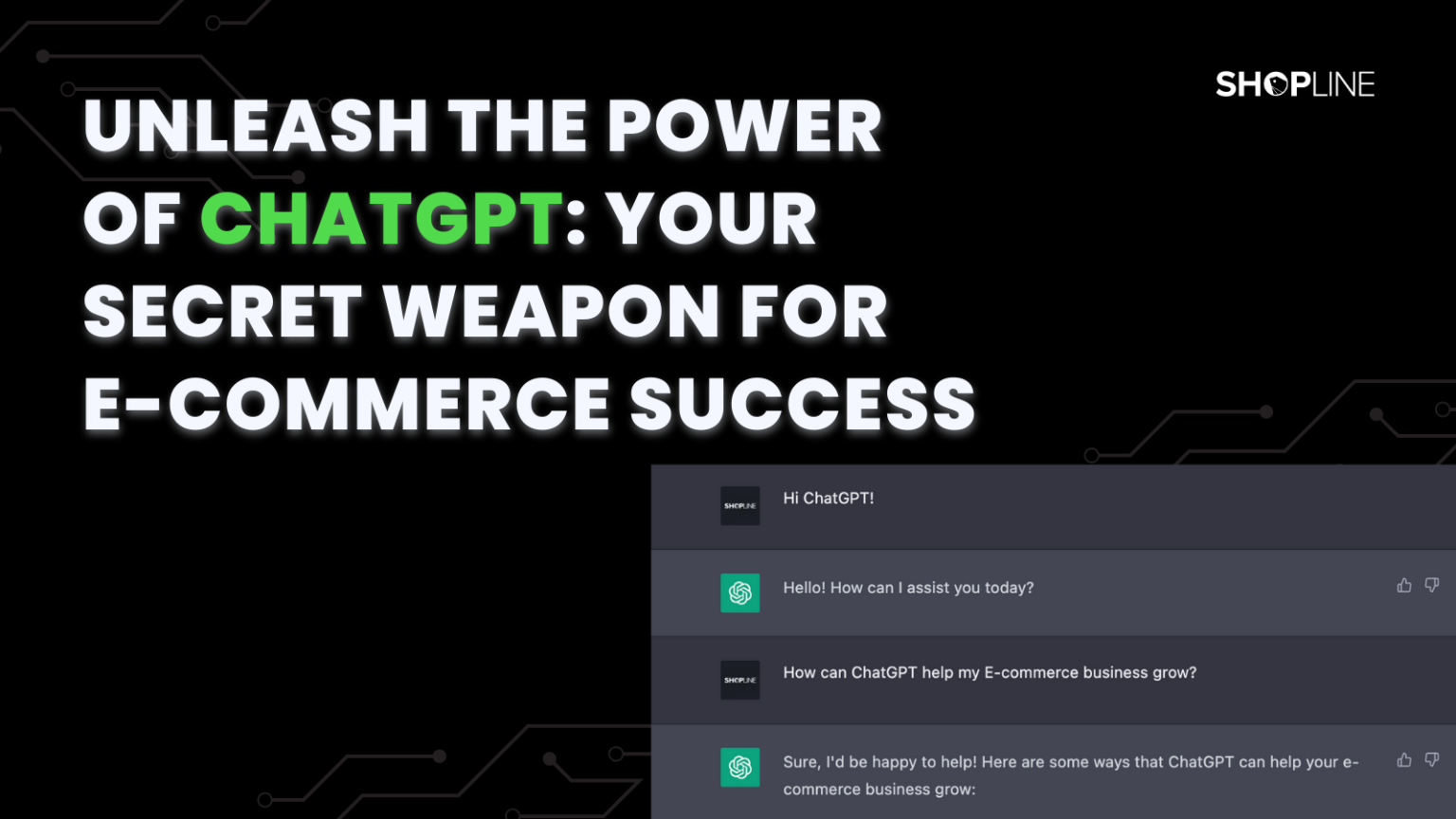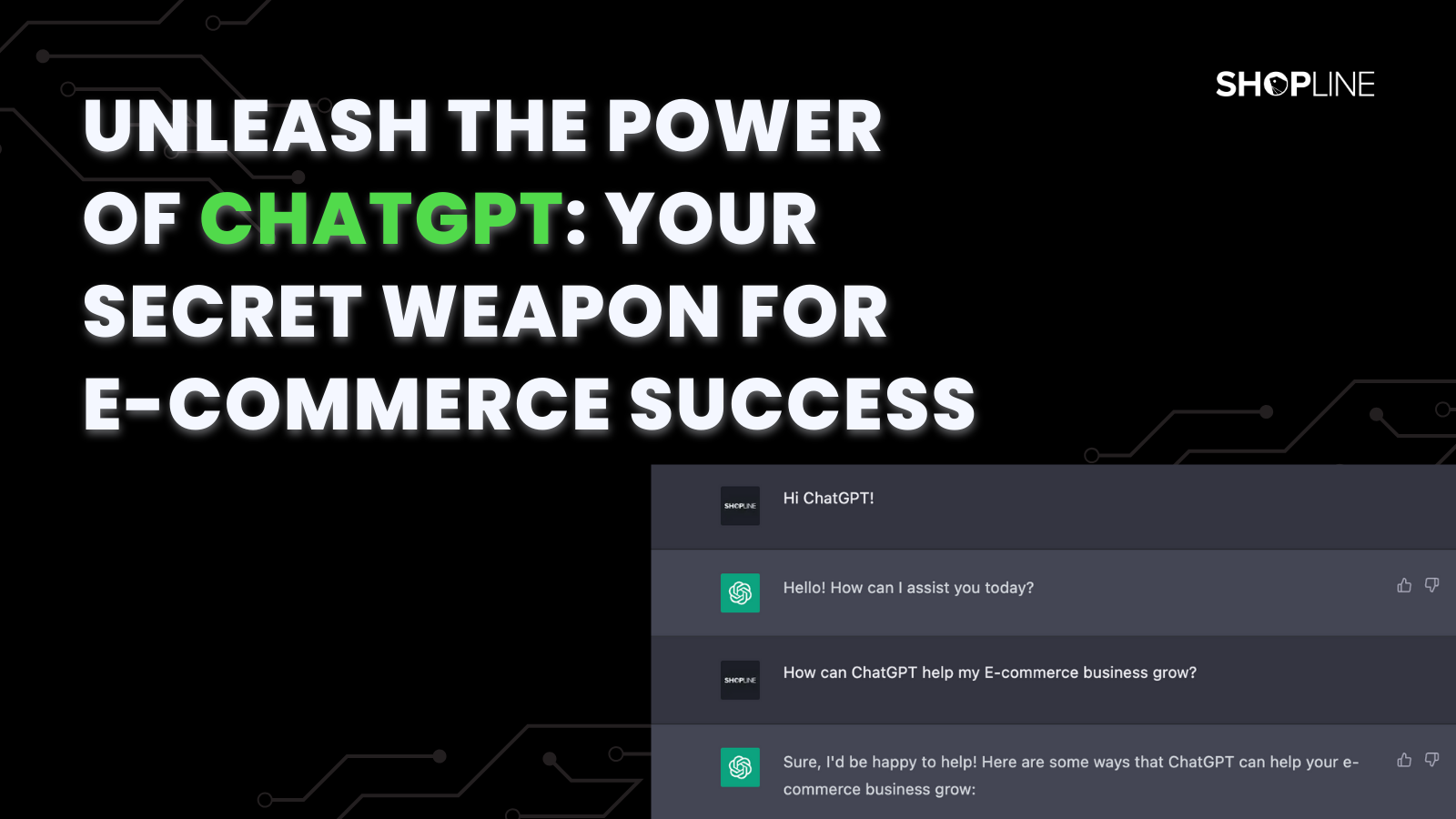From Manual to Automated: How ChatGPT is Changing the Game for E-Commerce Copywriting
In today’s digital age, e-commerce has become an essential part of doing business. With more and more consumers turning to online shopping, it’s no surprise that e-commerce has experienced a significant rise in popularity over the past decade. However, as the competition increases, businesses need to find ways to stand out from the crowd.
One of the best ways that brands can stand out is by using powerful copywriting to spur purchase decisions. Copywriting is the art of using words to persuade people to take action, and in e-commerce, it can be an effective way to convince customers to make a purchase. By improving headlines, product descriptions and promotional offers, businesses can often see an increase in conversion rates and boost their bottom line.
That’s where ChatGPT comes in. ChatGPT is an artificial intelligence (AI) language model developed by OpenAI. It’s designed to generate human-like responses to text prompts, making it an excellent tool for e-commerce businesses looking to improve their copywriting.
Notably, with ChatGPT, businesses can generate product descriptions, social media posts, email marketing campaigns, and more, all in a matter of seconds. This means that companies can save time and money while still producing high-quality copy that engages customers and drives sales.
Additionally, ChatGPT can help businesses improve their SEO. By generating keyword-rich content, companies can increase their search engine rankings and drive more traffic to their website. This, in turn, can lead to more conversions and higher revenue.
Unleashing the Potential of ChatGPT: How Your E-Commerce Business Can Benefit
It is clear that strong copywriting can help to engage customers and drive sales. However, creating high-quality content can be time-consuming and challenging, especially for small businesses with limited resources.
Let’s take a closer look at some of the specific benefits that ChatGPT can offer e-commerce businesses:
Time-Saving and Increased Efficiency:
One of the most significant benefits of ChatGPT is that it can save e-commerce businesses a significant amount of time. By automating certain tasks like copywriting, social media post copywriting, and email marketing campaigns, businesses can free up their time to focus on other important tasks like product development, customer service, and marketing strategies.
Improved Content Quality:
ChatGPT is designed to generate human-like responses to text prompts, meaning that the content it generates is often of high quality and engaging. By using ChatGPT to create product descriptions, social media posts, and other marketing content, businesses can create more compelling and effective content that can help to drive conversions and increase revenue.
Personalisation:
ChatGPT can also help e-commerce businesses to create more personalised content for their customers. By using ChatGPT to generate personalised emails, businesses can create more meaningful connections with their customers, leading to increased loyalty and repeat business.
SEO Optimisation:
ChatGPT can help e-commerce businesses to improve their search engine rankings by generating keyword-rich content that is optimised for SEO. By creating content that is more likely to appear in search results, businesses can drive more traffic to their website and increase their chances of making a sale.
Cost-Effective:
Finally, ChatGPT is a cost-effective tool for e-commerce businesses. By automating certain tasks and improving content quality, businesses can increase their revenue without having to invest in expensive marketing campaigns or hire additional staff.
ChatGPT offers a wide range of benefits for e-commerce businesses, from time-saving and increased efficiency to improved content quality and SEO optimization. By utilising this powerful AI tool, e-commerce businesses can improve their copywriting and increase their chances of success in the highly competitive online marketplace.
Creating Tailored Content with ChatGPT: How to Input Prompts and Refine Output
ChatGPT is a powerful tool for e-commerce businesses looking to improve their online presence and drive more sales. But how exactly can companies get started with using ChatGPT? In this section, we’ll share some tips and advice on how e-commerce businesses can begin using ChatGPT.
Getting Started:
The first step in using ChatGPT is to sign up for an account with OpenAI. Once you’ve signed up for an account, you’ll need to verify your email account.
Inputting Prompts:
Next, you’ll need to input prompts into ChatGPT to generate text. Prompts can be anything from product descriptions and social media posts to email marketing campaigns and blog posts. The more specific and detailed the prompt, the better the output will be.
| Tips:
It’s important to ask clear and specific questions so that ChatGPT can provide you with the most accurate and helpful answer possible. |
Refining Output:
Once you’ve generated text using ChatGPT, it’s important to refine the output to make it more tailored to your business needs. This may involve editing the text for grammar, style, and tone, as well as adding relevant keywords and calls to action.
Testing and Optimisation:
Finally, it’s important to test and optimise your ChatGPT output to ensure that it’s driving the desired results. This may involve A/B testing different versions of your content, analyzing engagement and conversion rates, and refining your prompts to generate even more effective content by clicking on regenerate response.
Read More
How can I use ChatGPT for marketing?
ChatGPT for SEO: 20 Ways to Leverage ChatGPT in Your SEO Activities
ChatGPT’s Content Creation Cheat Sheet: 20+ Essential Prompts
ChatGPT in Marketing: In-Depth Guide with Tools, Strategies & Examples
Author
-

As an Engagement Lead, my ultimate goal is to help our users maximize their lifetime value when they interact with SHOPLINE. I firmly believe that exceptional customer experiences are the key to creating long-lasting relationships and fostering loyalty. My approach to engagement is built on a deep understanding of our users' needs and aspirations. I strive to create personalised experiences that resonate with our users and meet their unique requirements. By building strong relationships with our users, I help them feel valued and understood, ultimately leading to increased satisfaction and retention. I am passionate about identifying opportunities for growth and innovation in our engagement strategies. I work closely with our team to develop data-driven solutions that improve the overall user experience and drive business results. With a customer-centric mindset, I am dedicated to continuously improving our engagement processes and ensuring that our users feel supported and empowered throughout their journey with us.





